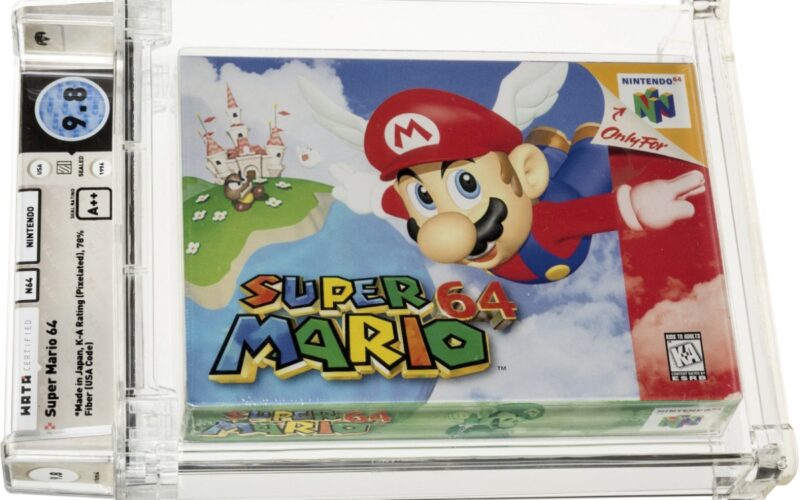Surrounded by thousands of objects bearing the likeness of Nintendo’s moustachioed plumber, 40-year-old Kikai reflects that his “life would be totally different without Mario” who also marks four decades this week.
The colourful Super Mario Bros., released for Nintendo’s home consoles in Japan on September 13, 1985, was a landmark of early video gaming.
Players controlled the eponymous character as he ran and hopped his way from left to right through a colourful world of platforms, pipes and scowling enemies − all set to the jaunty eight-bit music that has stuck in minds for decades.
“My father bought me the game, and I’ve been playing for as long as I can remember,” Kikai said in his office lined with somewhere between 20 and 30 thousand Mario-related objects, from plastic figurines to plush toys and carpets.
Created by legendary game designer Shigeru Miyamoto, Mario has obsessed several generations of fans like Kikai.
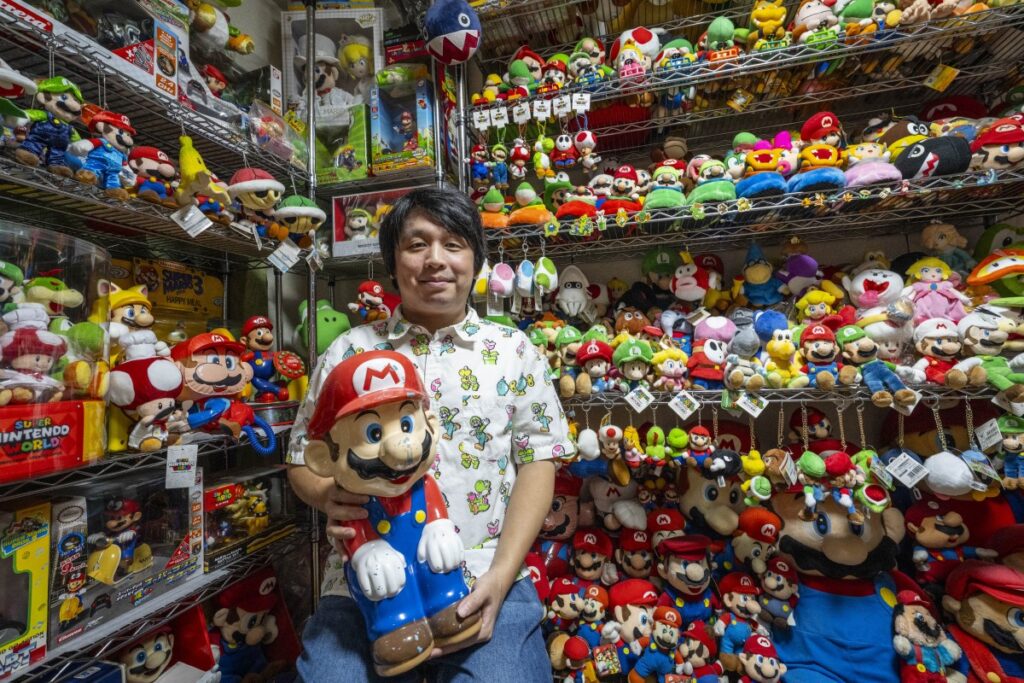
The character’s first appearance came in 1981 arcade game Donkey Kong, when he was known simply as Jumpman.
Mario’s christening came in 1983 with the Mario Bros. arcade cabinet, but his true rise to fame was with Super Mario Bros. on Nintendo’s Famicom console (known as the NES in Europe), which has sold more than 40 million copies.
‘Lucky accident’
“It was a lucky accident, because at the start there was no plan for this character to become a video gaming icon,” said Alexis Bross, the French co-author of the book Mario Generations.
The plumber’s look was initially chosen to conserve scarce computing resources and make him stand out on screen, with bright blue overalls and a cap that saved on animating hair.
Miyamoto created Mario as “a completely functional character under very strict technical constraints” governing the few pixels making up his image, Bross noted.
But as the games endured through the years, their star became a “generation-spanning” and even “reassuring” presence, he added.
“He’s a regular man, not unlike us, who has no special powers at the outset and stays a bit frozen in time.”
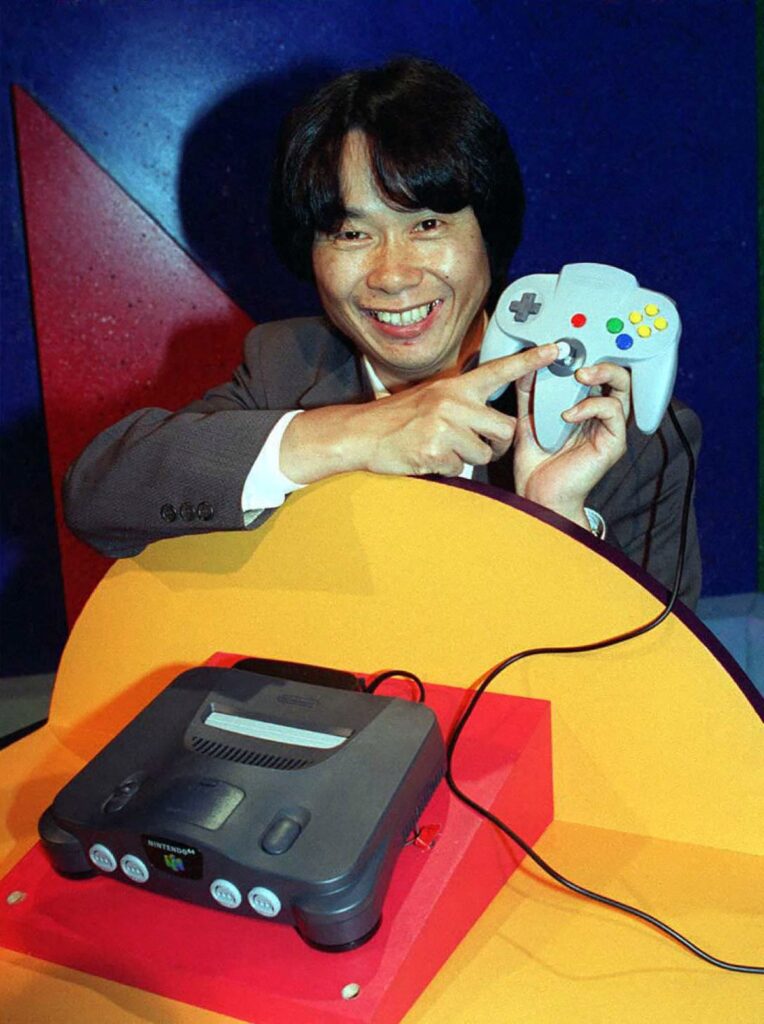
Beyond Mario’s mainline adventures, spinoff games have dropped him, his buddies like brother Luigi and his rivals like dragon Bowser into Mario Golf, Mario Tennis and the vastly popular Mario Kart.
Graphics have evolved from 2D to 3D as the games’ reach has spread to many hundreds of millions of players worldwide.
But the original pixelated look has long inspired artists making their own riffs on the character.
Lyon-based street artist In The Woup, who declined to give his real name, has been mashing Mario up with other characters like Gandalf from The Lord of the Rings or Star Wars antagonist Darth Vader in guerilla mosaics dotting cities around the world for years.
“Bringing things from my games console out on the street means bringing immaterial things out into real life. I thought that was pretty crazy,” the 39-year-old said, a Mario mask securely concealing his face to keep up his anonymity.
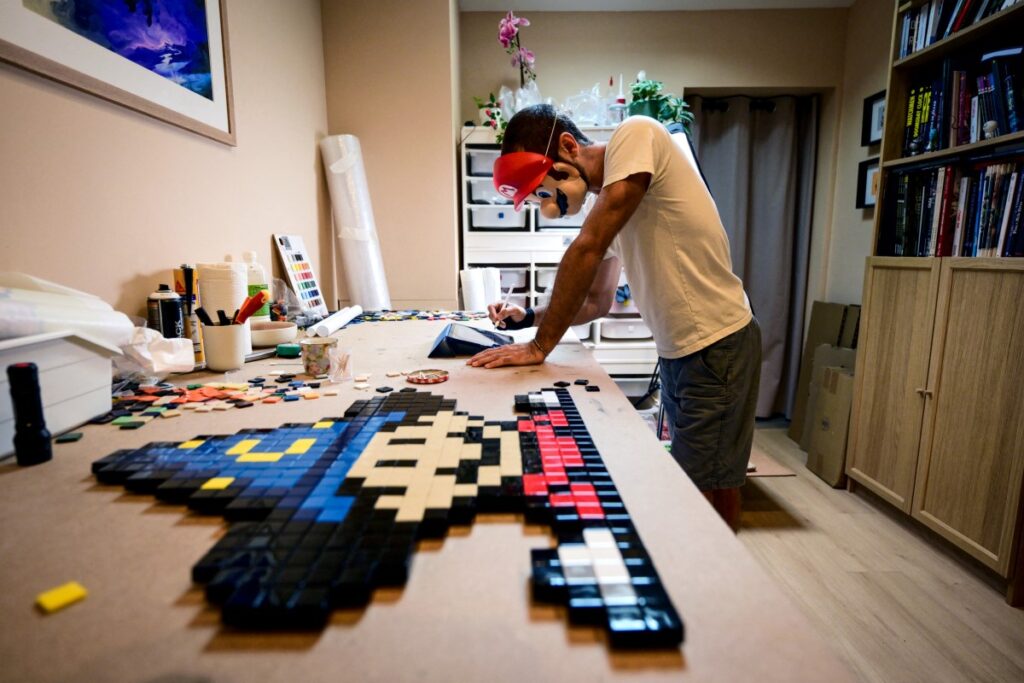
Changing with the times
Many of today’s children and teens have turned towards more recent heavyweight gaming titles such as Fortnite and Roblox.
But Mario still enjoys a high “parental nostalgia” quotient, with those now heading into middle age still buying the games and playing together with their offspring, said Rhys Elliott of analytics firm Alinea.
Nintendo has looked to evolve along with its audience, recently launching a range of baby clothing and accessories in Japan.
Mario also graces goods from luxury watches to Lego, as well as being the star of theme parks in both Japan and the US.
And in 2023, the plucky plumber made a successful leap to the big screen after a 1993 flop that was one of the first ever game-to-movie adaptations.
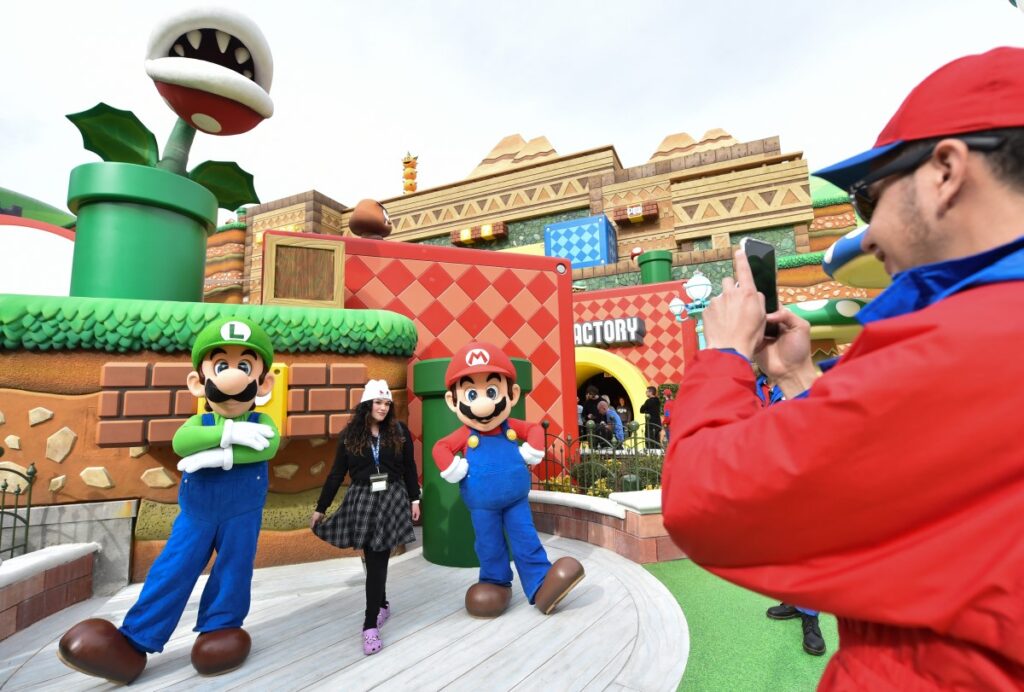
The more recent film brought in over $1.3 billion, with a sequel in the works for next year.
With gender relations in a different light today than 40 years ago, Mario’s objective in-game is no longer securing a kiss from a grateful rescued princess.
Nintendo’s princesses are more likely these days to star in their own titles, as the company “adapts to new audiences, following little by little developments in society,” author Bross said.
Even now, fans are eagerly awaiting a new Mario-led 3D adventure following the blockbuster release of the Nintendo Switch 2 console this June.
Bross hopes to see “a totally new idea that will be a new milestone in the history of videogames”.
The phenomenon in numbers
40 million cartridges
The original Super Mario Bros. cartridge game was released in 1985 for the Nintendo Entertainment System (NES) console in the US and elsewhere, and on Japan’s Famicom console.
It sold 40.2 million copies worldwide, including 6.8 million in Japan − one for every 18 members of the country’s population at the time.
“Until that point, Famicom users were almost all children. But Super Mario Bros. even featured in mainstream weekly magazines alongside celebrity gossip,” Hideki Yasuda, an analyst at Toyo Securities, said.
“That shows the title’s impact − it significantly widened the age range” of video game consumers, he said.
8
The number of people who worked on the side-scrolling platform game Super Mario Bros., according to an interview with its creator Shigeru Miyamoto from a 1988 Japanese book.
Miyamoto’s team included Takashi Tezuka, who became a longtime collaborator and contributed to many games in Nintendo’s Mario and Legend of Zelda series.
The instantly recognisable, upbeat theme tune was written by Koji Kondo, the composer behind the company’s most famous game music.
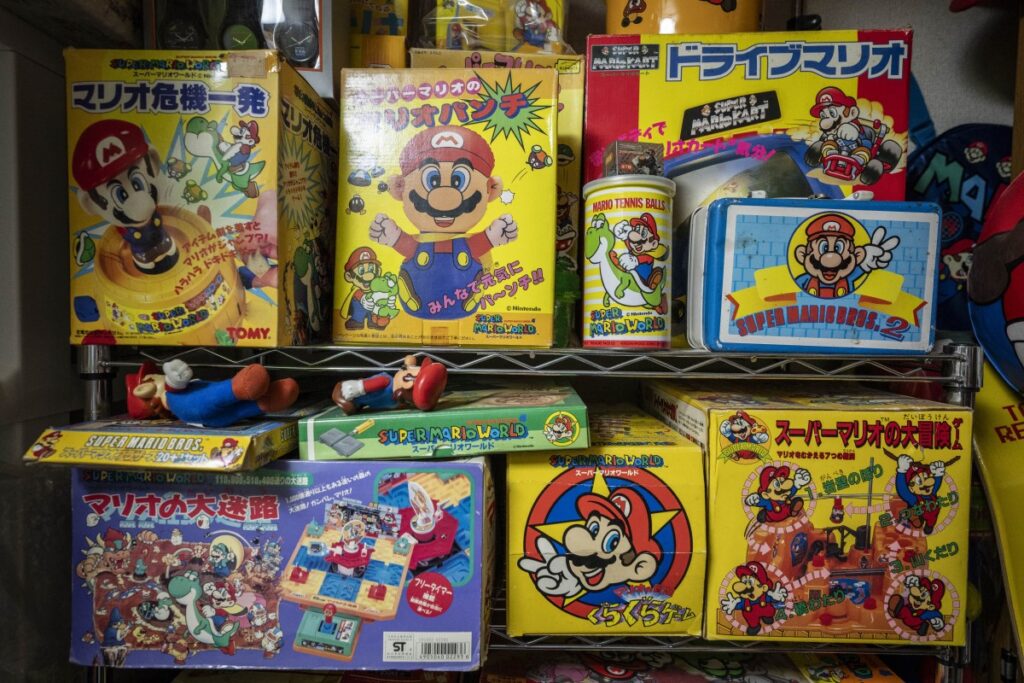
4 minutes, 54 seconds, 515 milliseconds
The time it took the American player “averge11” to complete Super Mario Bros. last month, setting a new record.
The play-through, which beat the last record by a few hundredths of a second, thrilled the world of speedrunning − the art of finishing a game as quickly as possible by making use of all known tricks and technical glitches.
The record for completing the game blindfolded belongs to a Japanese player who did it in 14 minutes and 46 seconds, according to Guinness World Records.
Number one… in bookstores
The bestselling book of all genres in Japan in 1985 and 1986 was titled Super Mario Bros: The Complete Strategy Guide.
Over 111 pages, it detailed the best routes to take through the game’s 32 levels − which were painstakingly drawn out by hand, in an era before screenshots were commonplace.
The book sold more than 1.3 million copies in Japan.
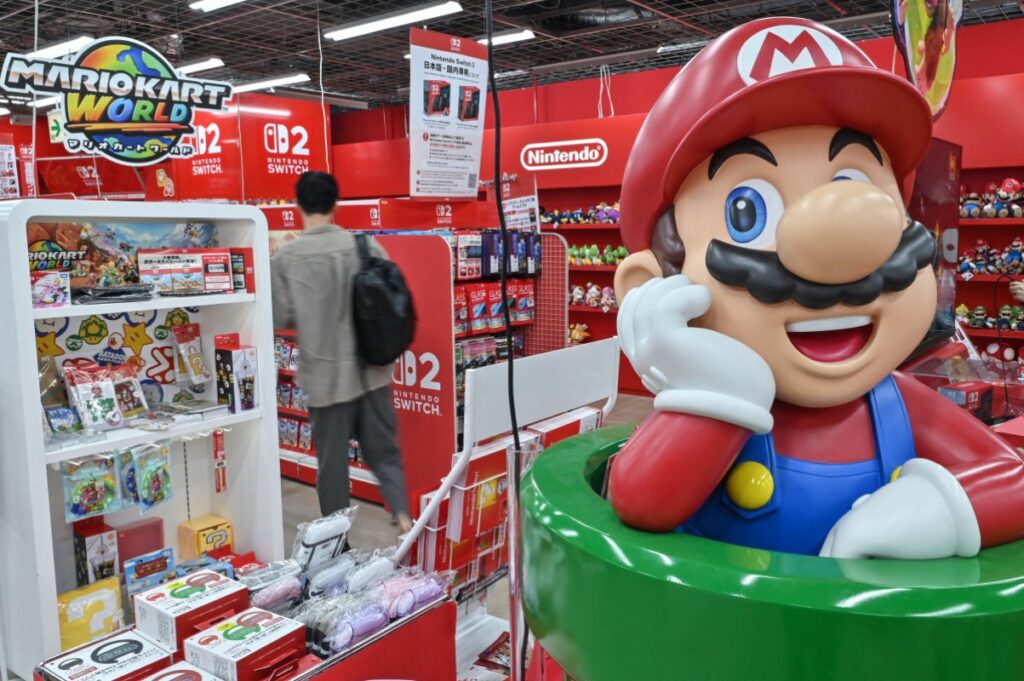
$1.56 million
The price that a single Super Mario 64 cartridge, still in its original packaging, fetched at auction in July 2021.
That makes the game − released in 1996 for the Nintendo 64 console − the most expensive ever sold at an online auction, according to Guinness World Records.
452 million games
Altogether, the games in the Super Mario series have sold more than 452 million units as of March 2025, Nintendo says.
This figure is only for platform games and does not include megahit spin-offs like Mario Kart or sports games starring the red-clad plumber and his friends.






